

Tirana 2012
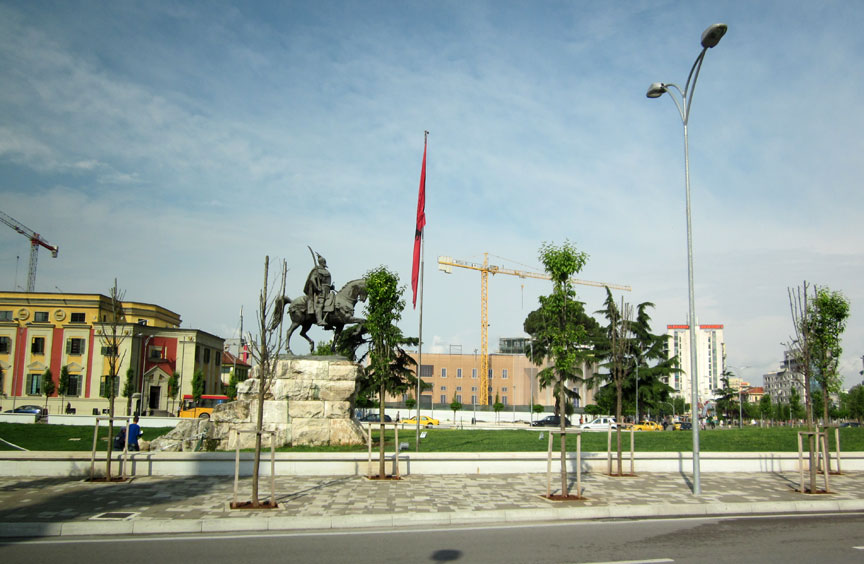
Tirana
More Photos of Skanderbeg Square
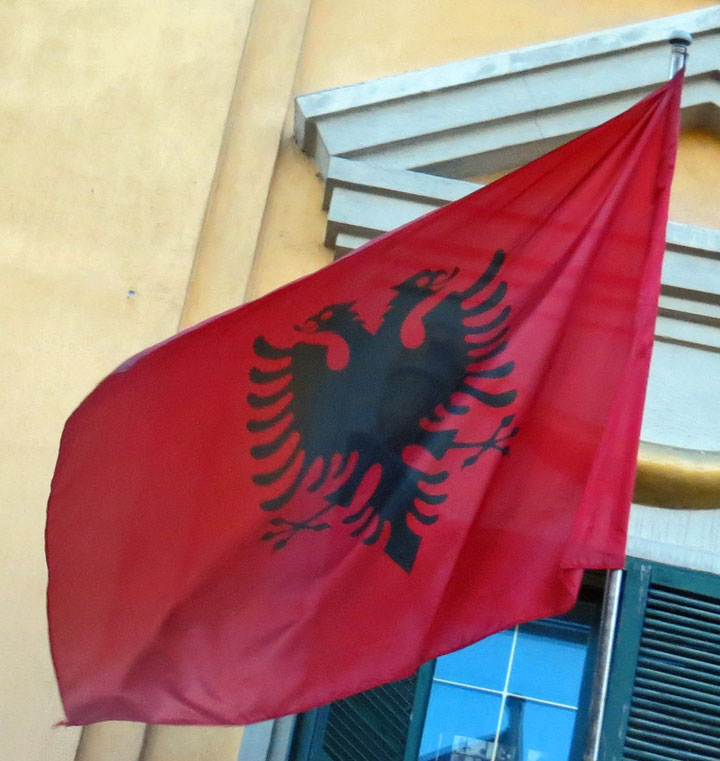
Tirana is the capital and the largest city of Albania. Modern Tirana was founded as an Ottoman town in 1614 by Sulejman Bargjini, a local ruler from Mullet, although the area has been continuously inhabited since antiquity. Tirana became Albania's capital city in 1920 and has a population of 400,000 , with metro area population of 763,634 . The city is host to public institutions and private universities, and is the center of the political, economical, and cultural life of the country.

ancient bridge
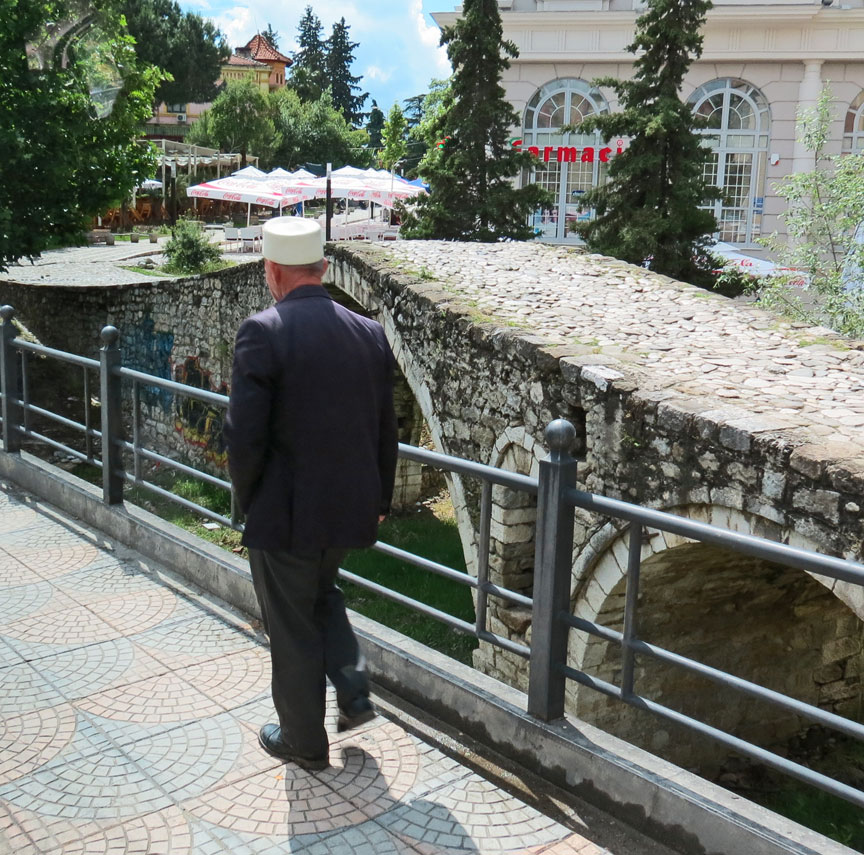
The Municipality of Tirana is located at (41.33°N, 19.82°E) in Tirana District,
Tirana County on the river Ishėm, about 32 kilometers (20 mi) inland. Tirana's
average altitude is 110 meters (360 ft) above sea level and its highest point
measures 1,828 m (5,997.38 ft) at Mali me Gropa. The city is mostly surrounded
by hills, with Dajti Mountain on the East and a slight valley opening on the
North-West overlooking the Adriatic Sea in the distance. The Tiranė river also
runs through the city, whereas the Lanė river is a brook. The city borders the
surrounding municipalities of Paskuqan, Dajt, Farkė, Vaqarr, Kashar, and Kamėz.
It also contains a total of four artificial lakes: the Tirana Artificial Lake
around which was built the Big Park, Paskuqani Lake, Farka Lake, and Tufina
Lake. Tirana is on the same parallel as Naples, Madrid, Istanbul, and New York,
and on the same meridian as Budapest and Kraków.
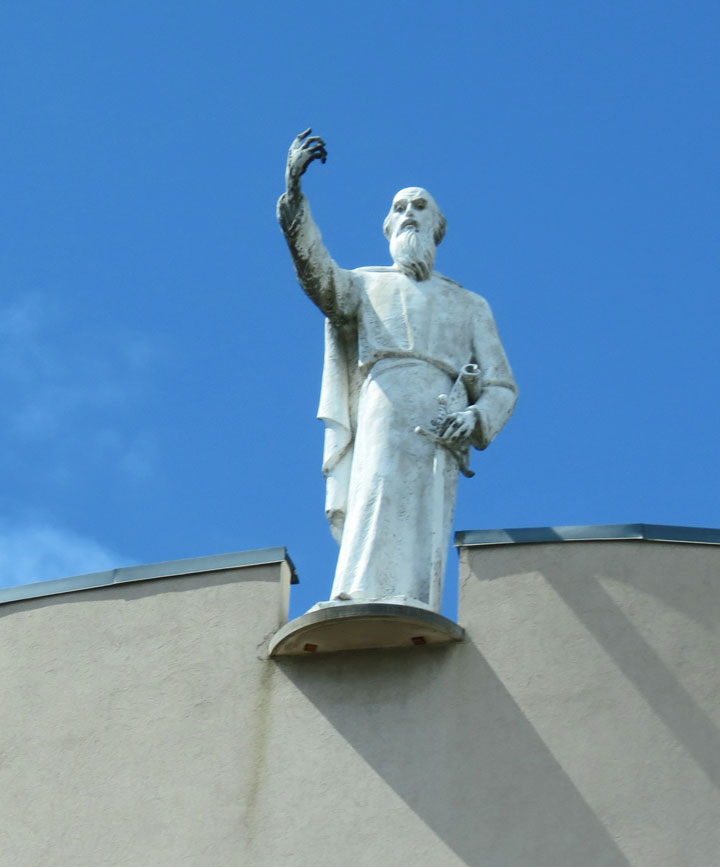
St Paul's Catholic Cathedral
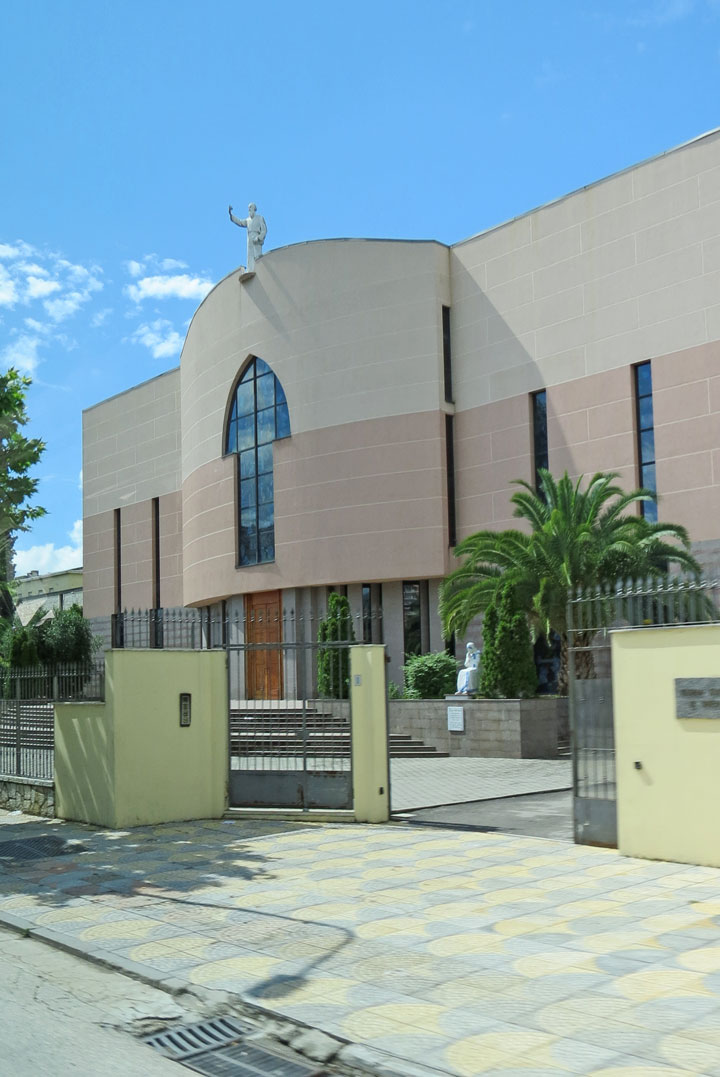
The area occupied by Tirana has been populated since Paleolithic times dating
back 10,000 to 30,000 years ago as suggested by evidence from tools found near
Mount Dajt's quarry and in Pellumba Cave. As argued by various archaeologists,
Tirana and its suburbs are filled with Illyrian toponyms as its precincts are
some of the earliest regions in Albania to be inhabited.

The oldest discovery in downtown Tirana was a Roman house, later transformed
into an aisleless church with a mosaic-floor, dating back to the 3-rd century
A.D., with several other remains found near a medieval temple at Shengjin
Fountain in eastern suburbs. A castle possibly called Tirkan or Theranda whose
remnants are found along Murat Toptani Street, was built by Emperor Justinian in
520 AD and restored by Ahmed Pasha Toptani in the 18th century. The area had no
special importance in Illyrian and classical times. In 1510, Marin Barleti, an
Albanian Catholic priest and scholar, in the biography of the Albanian national
hero Skanderbeg, Historia de vita et gestis Scanderbegi Epirotarum principis
(The story of life and deeds of Skanderbeg, the prince of Epirotes), referred to
this area as a small village.
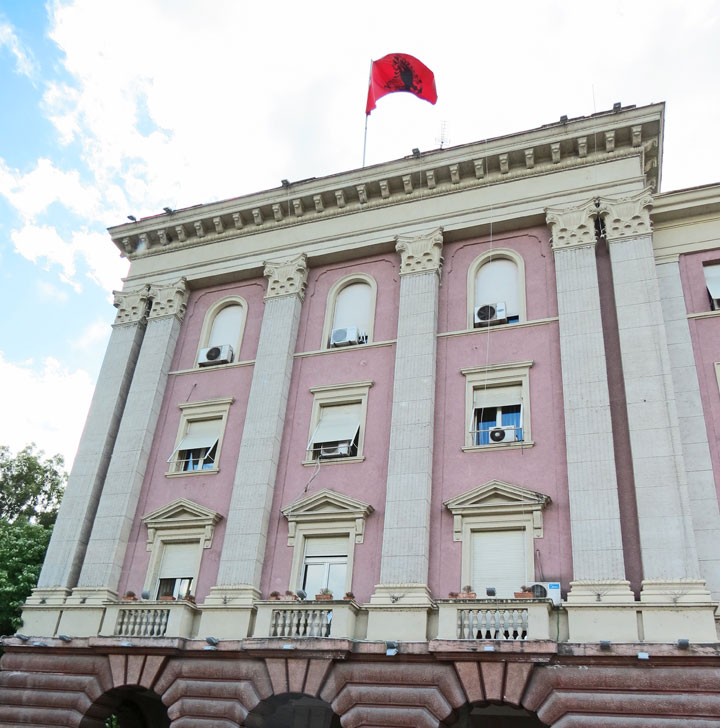
Records from the first land registrations under the Ottomans in 143132 show
that Tirana consisted of 60 inhabited areas, with nearly 2,028 houses and 7,300
inhabitants. In 1614, Sulejman Bargjini, a local ruler established the Ottoman
town with a mosque, a commercial centre, and a hammam (Turkish sauna). The town
was located along caravan routes and grew rapidly in importance until the early
19th century.
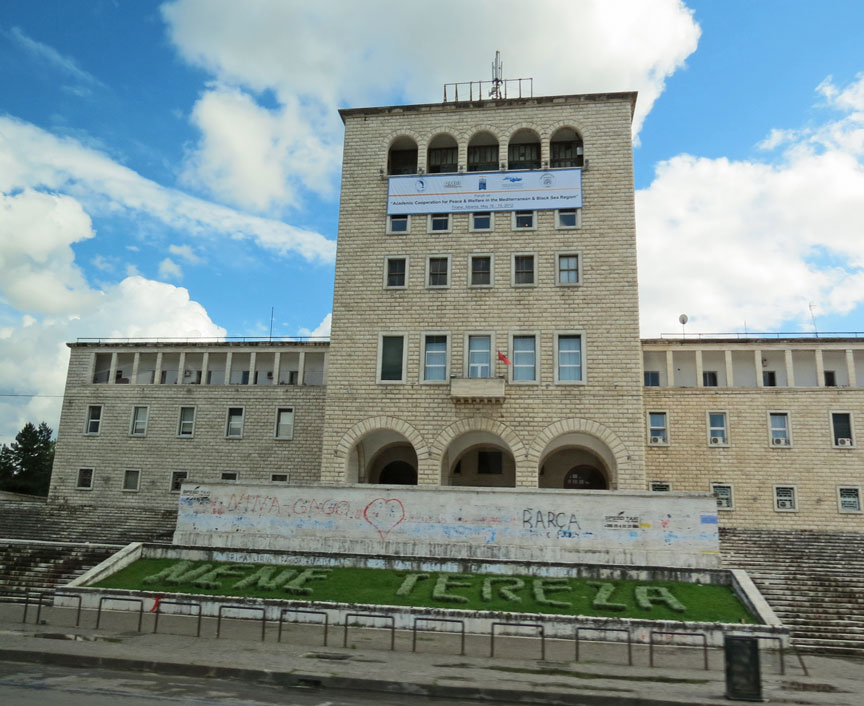
During this period, the Et'hem Bey Mosque built by Molla Bey of Petrela, began
to be constructed. It employed the best artisans in the country and was
completed in 1821 by Molla's son, who was also Sulejman Bargjini's grandnephew.
In 1800, the first newcomers arrived in the settlement, the so-called ortodoksit.
They were Vlachs from villages near Korēė and Pogradec who settled around modern
day Park on the Artificial Lake. They started to be known as the llacifac and
were the first Christians to arrive after the creation of the town. After Serb
reprisals in the Debar region, thousands of locals fled to Tirana. In 1807,
Tirana became the center of the Sub-Prefecture of Krujė-Tirana. After 1816,
Tirana languished under the control of the Toptani family of Krujė. Later,
Tirana became a Sub-Prefecture of the newly created Vilayet of Shkodėr and
Sanjak of Durrės. In 1889, the Albanian language started to be taught in
Tirana's schools, while the patriotic club Bashkimi was founded in 1908. On 28
November 1912, the national flag was raised in agreement with Ismail Qemali.
During the Balkan Wars, the town was temporarily occupied by the Serbian army,
and it took part in uprising of the villages led by Haxhi Qamili. In 1917, the
first city outline was compiled by Austro-Hungarian architects.
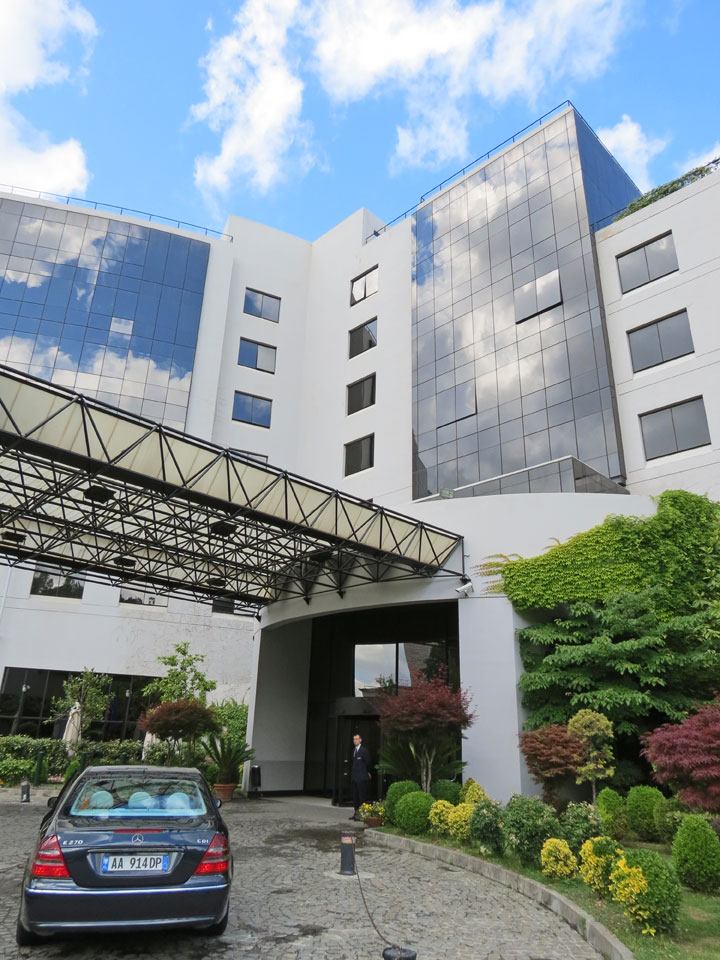
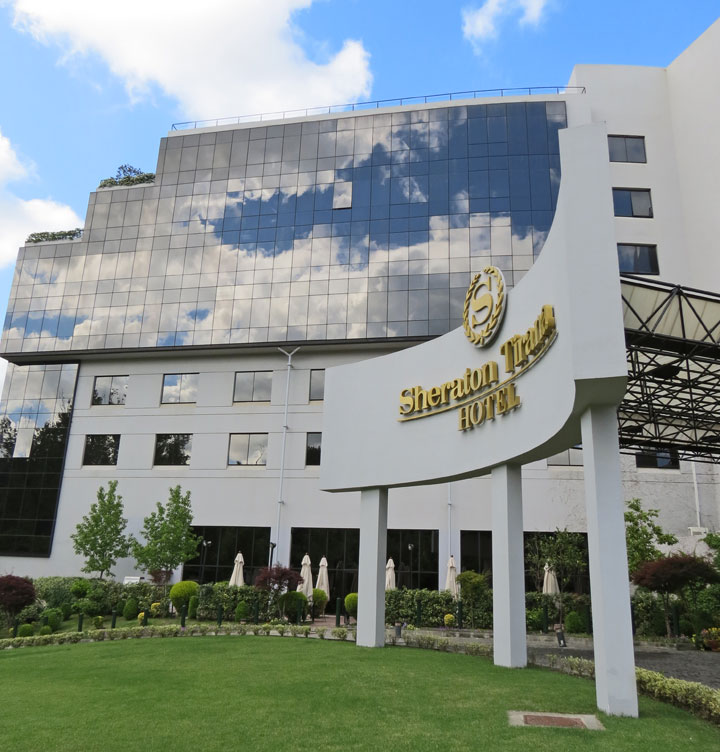
Sheraton Tirana Hotel
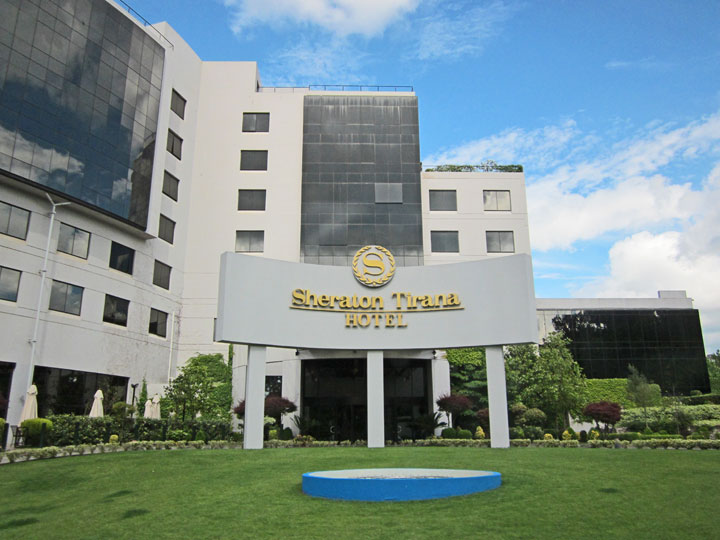
On 8 February 1920, the Congress of Lushnjė proclaimed Tirana as the temporary
capital of Albania which had acquired independence in 1912. The city retained
that status permanently on 31 December 1925. In 1923, the first regulatory city
plan was compiled by Austrian architects. The center of Tirana was the project
of Florestano de Fausto and Armando Brasini, well known architects of the Benito
Mussolini period in Italy. Brasini laid the basis for the modern-day arrangement
of the ministerial buildings in the city centre. The plan underwent revisions by
Albanian architect Eshref Frashėri, Italian architect Castellani, and Austrian
architects Weiss and Kohler. The rectangular parallel road system of Tirana e Re
district took shape while the northern portion of the main Boulevard was opened.
On the political sphere, Tirana experienced tumultuous events such as
intermittent attacks from the army of the Kingdom of Serbs, Croats and Slovenes
and forces of Zogu on the Shkalla e Tujanit (Step of Tujan). In 1924, Tirana was
at the center of a coup d'état led by Fan S. Noli. Since 1925, when they were
banned in Turkey, the Bektashis, an order of dervishes who take their name from
Haji Bektash, a Sufi saint of the 13th and 14th centuries, made Tirana their
primary settlement. Modern Albanian parliamentary building served as a club of
officers. It was there that in September 1928, Zog of Albania was crowned King
Zog I, King of the Albanians.
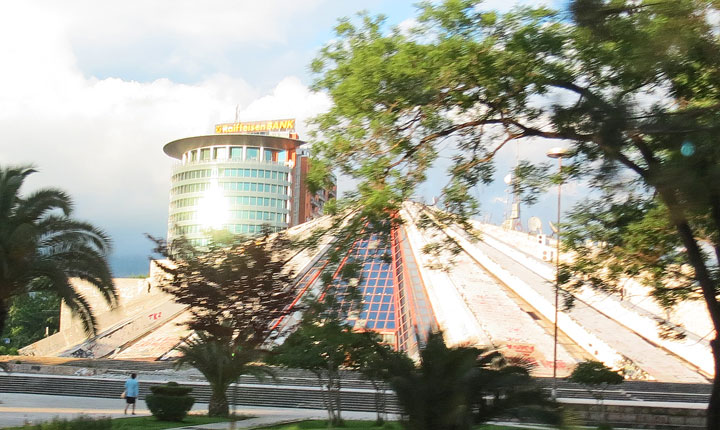
the pyramid
The period between the 1930s and 1940s is characterized by the completion of the above architectural projects, clashes between occupying forces and local resistance, and the coming to power of the communists. In 1930, the northern portion of modern Dėshmorėt e Kombit (National Martyrs) Boulevard finished and named Zog I Boulevard. Meanwhile, the ministerial complex, boulevard axis, Royal Palace (Palace of the Brigades), former municipal building, and the National Bank were still under construction. The latter is the work of renown Italian architect Vittorio Ballio Morpurgo. In addition, Tirana served as the venue for the signing between Fascist Italy and Albania of the Pact of Tirana. In 1939, Tirana was captured by Fascist forces appointing a puppet government. In the meantime, Italian architect Gherardo Bosio was asked to elaborate on previous plans and introduce a new project in the area of present day Mother Teresa Square.[11] By the early 40s, the southern portion of the main boulevard and surrounding buildings were finished and renamed with Fascist names. A failed assassination attempt was carried towards Victor Emmanuel III of Italy by a local resistance activist during a visit in Tirana. In November 1941, Enver Hoxha founded the Communist Party of Albania. The town soon became the center of the Albanian communists who mobilized locals against Italian fascists and later Nazi Germans, while spreading ideological propaganda. On 17 November 1944, the town was liberated after a fierce battle between the Communists and German forces. The Nazis eventually withdrew and the communists seized power.
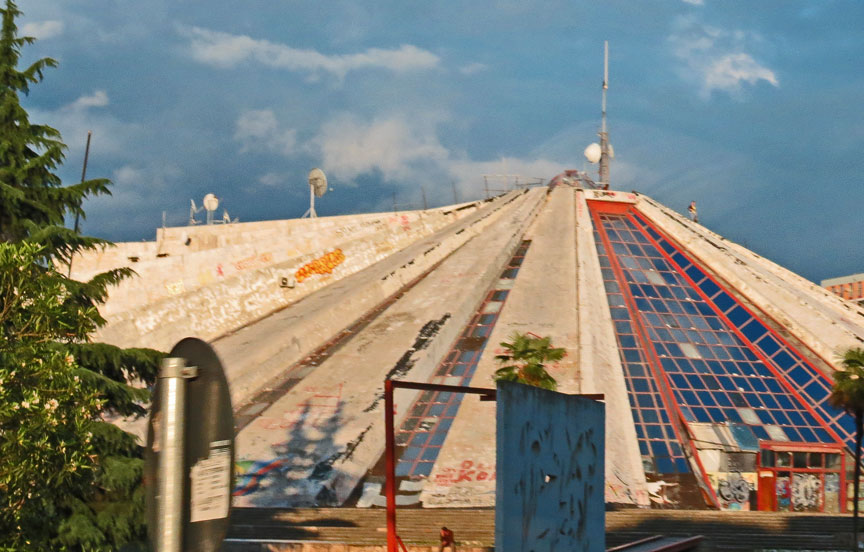
From 1944 up to 1991, the city experienced a somewhat ordered development with
considerable decline in architecture. Massive socialist-styled apartment
complexes and factories began to be built, while Skanderbeg Square was
redesigned with a number of buildings being demolished. For instance, Tirana's
former Old Bazaar and the Orthodox Cathedral were razed to the ground for the
erection of the Soviet-styled Palace of Culture. The Italian-built municipal
building was detonated and the National Historical Museum was constructed
instead, while the structure housing the Parliament of Albania during the
monarchy was turned into a children's theater. Additionally, the northern
portion of the main boulevard was renamed Stalin Boulevard and his statue
erected in the city square. As private car ownership was banned, mass transport
consisted mainly of bicycles, trucks, and buses. After Hoxha's death, a museum
in the form of a pyramid was constructed in his memory by the government.
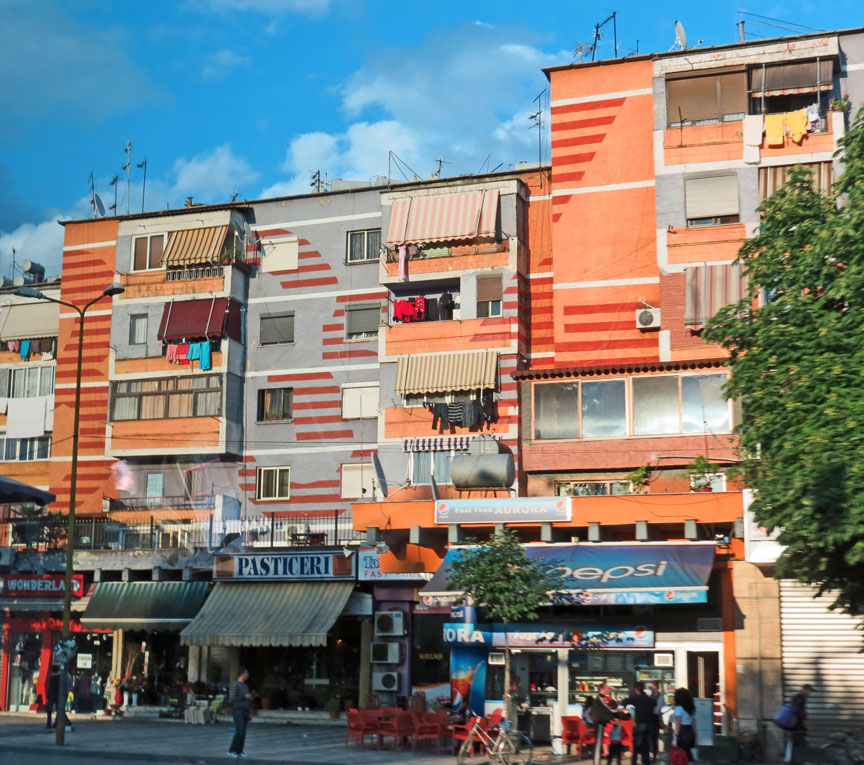
Prior and after the proclamation of Albania's self isolationist policy, a number
of high-profile figures paid visits to the city such as former Soviet President
Nikita Khrushchev, former Premier of the People's Republic of China, Zhou Enlai
and lately former Minister for Foreign Matters of the German Democratic
Republic, Oskar Fischer. In 1985, Tirana served as the ceremonial venue of Enver
Hoxha's funeral. A few years later, Mother Teresa became the first religious
figure to visit the country following Albania's long declared atheist stance.
She laid respect to her parents resting at a local cemetery. Starting at Student
City and ending at Skanderbeg Square with the toppling of Enver Hoxha's statue,
the city saw significant demonstrations by University of Tirana students
demanding political freedoms.
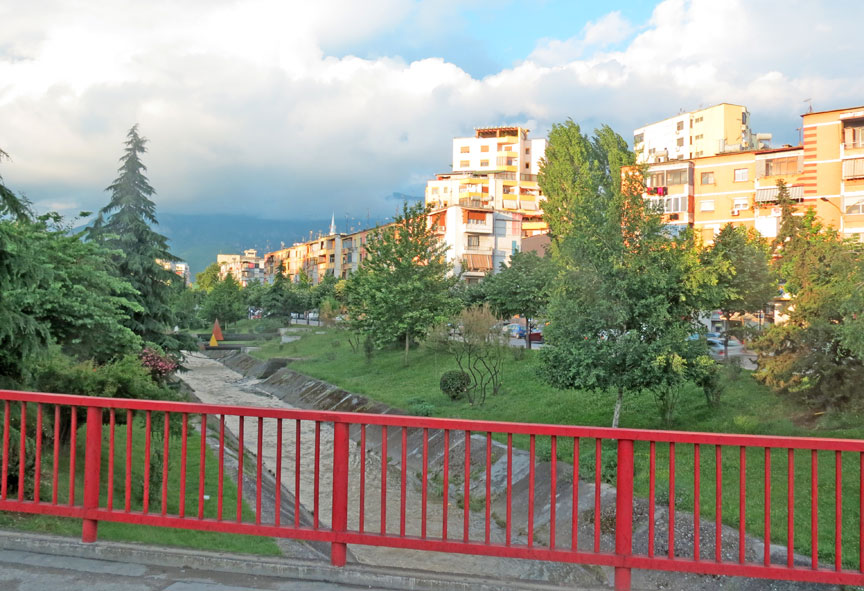
The period following the fall of communism until the late 1990s is often
described negatively in terms of urban development even though significant
utilities' investments were done. Kiosks and apartment buildings started to be
erected on public areas while common areas between buildings were usurped in
various forms. Informal districts formed around the city as internal migrants
gathered from around the country.
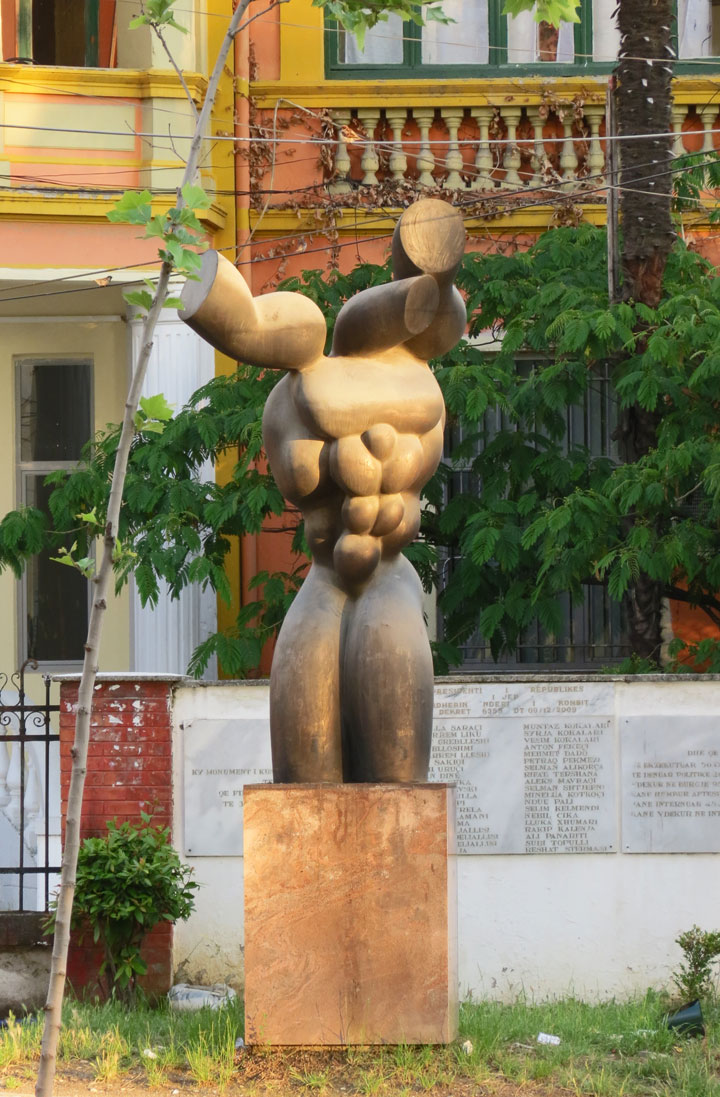
During this period, Tirana was transformed from a centrally planned economy into
a market economy. Private car ownership was reinstated and businesses
re-established. However poor city lighting and road quality became major
problems as mud, potholes, street floods, and dust became permanent features on
the streets. However, all buildings and apartments were denationalized,
second-hand buses introduced, and modern water, telephone, and electrical
systems built during 19921996 which form the backbone of modern Tirana. Enver
Hoxha's Museum (Pyramid) was dismantled in 1991 and renamed in honor of
persecuted activist Pjeter Arbnori.
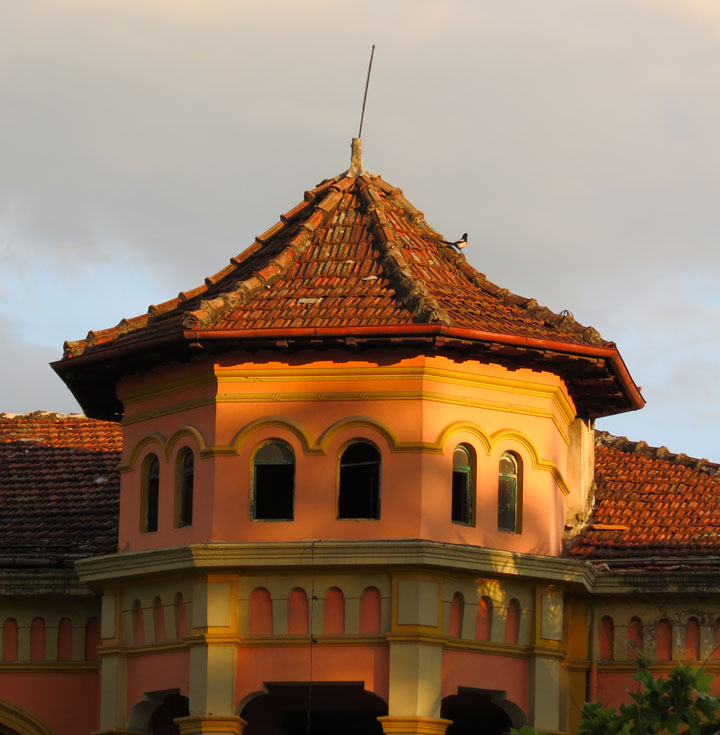
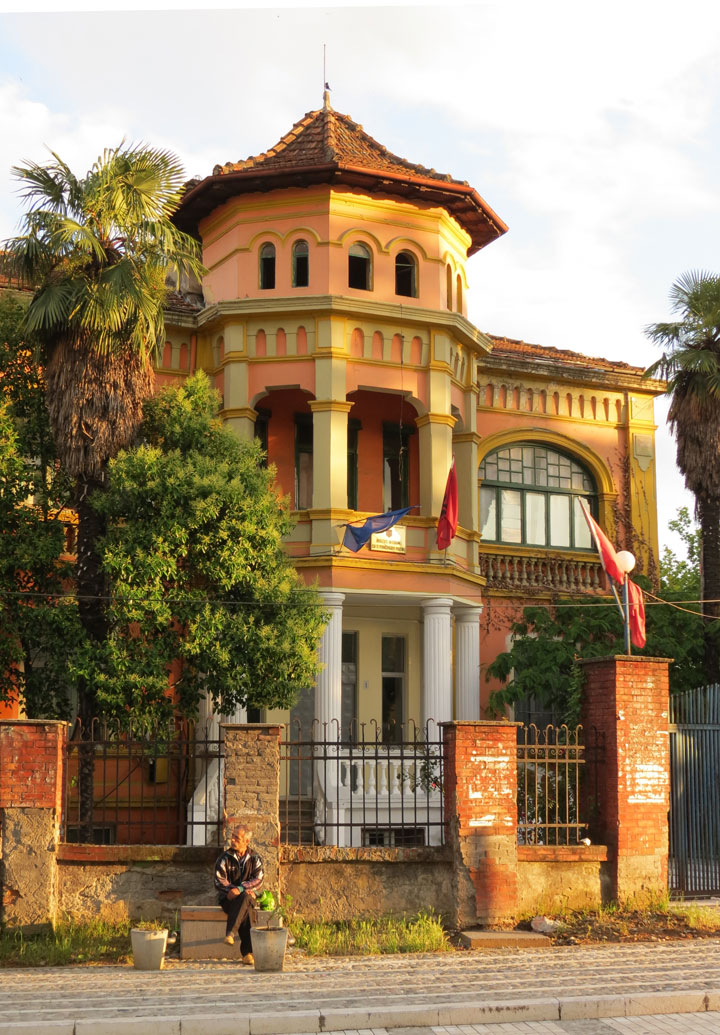
On the political aspect, the city witnessed a number of significant events. A
number of important Western personalities visited the capital such as former
U.S. Secretary of State James Baker and Pope John Paul II. The former visit came
amidst an historical setting after the fall of communism, as hundreds of
thousands were chanting in Skanderbeg Square Baker's famous saying of "Freedom
works!". Pope John Paul II became the first leading religious figure to visit
Tirana after Mother Teresa's visit few years ago. During the Balkans turmoil in
the mid 1990s, the city experienced dramatic events such as the unfolding of the
1997 unrest in Albania, and a failed coup d'etat on 14 September 1998.
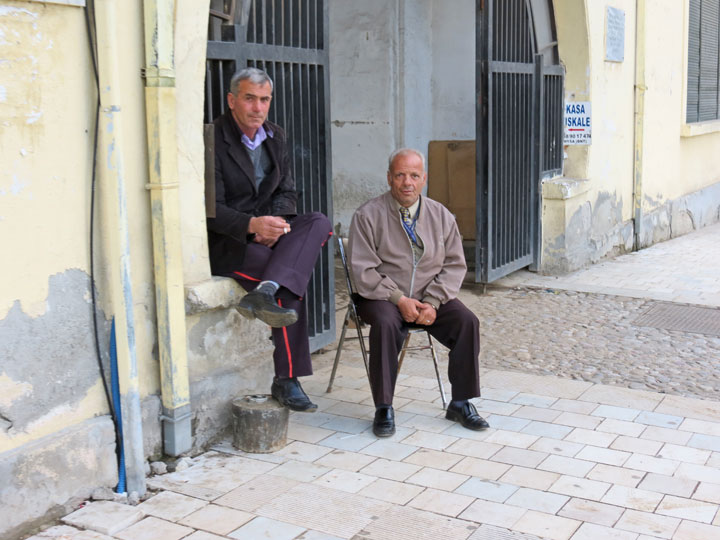
In 2000, former Tirana mayor Edi Rama undertook a radical campaign to demolish
illegal buildings around the city centre and on Lana River banks to bring the
area to its pre-1990 state. In addition, Rama led the initiative to paint the
faēades of Tirana's buildings in bright colours, although much of their
interiors continue to degrade. Public transport was privatized and newer second
hand buses were introduced. Municipal services were expanded, a richer calendar
of events introduced, and a new Municipal Police force established. Most main
roads underwent reconstruction such the Ring Road (Unaza), Kavaja Street, and
the main boulevard. Additionally, common areas between apartment buildings were
brought back to normality after decades of neglect, while existing parks, city
squares, and sports recreational areas were renovated giving Tirana a more
European look. However some critics argue that traditional houses are being
threatened by continuous construction of apartment buildings while some green
areas are being used for the construction of skyscrapers. In fact, Rama has been
accused by critics of political corruption while issuing building permits, but
he has dismissed the claims as baseless. Lately, decreasing urban space and
increased traffic congestion have become major problems as a general
construction chaos is observed in Tirana.

In 2007, U.S. President George W. Bush marked the first time that such a high
ranking American official visited Albania and an unprecedented security presence
in and around the capital during his visit in Tirana. For this occasion, a
central Tirana street was named to his honor. In 2008, the 2008 Gėrdec
explosions were especially felt in the capital as windows were shattered and
citizens shaken. In 21 January 2011, Albanian police clashed with opposition
supporters in front of the Government building as cars were set on fire, 3
persons killed, and 150 wounded.
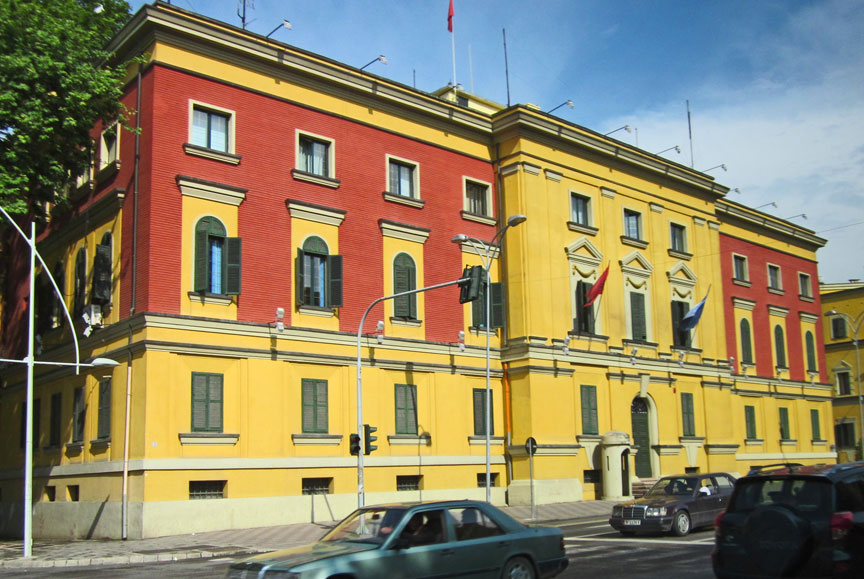
Although much has been achieved, critics argue that there lacks a clear vision
on Tirana's future. Loss of public space due to illegal and chaotic
construction, unpaved roads in suburban areas, degradation of Tirana's
Artificial Lake, rehabilitation of Skanderbeg Square, an ever present smog, the
construction of a central bus station, and public parking lots are some of the
pressing issues facing Tirana. Proposed future plans include the continuation of
the legalization process of illegal buildings, construction of the southwestern
portion of the Big Ring Road, a tram system, and the rehabilitation of the
Tirana Train Station area.
Text from Wikipedia
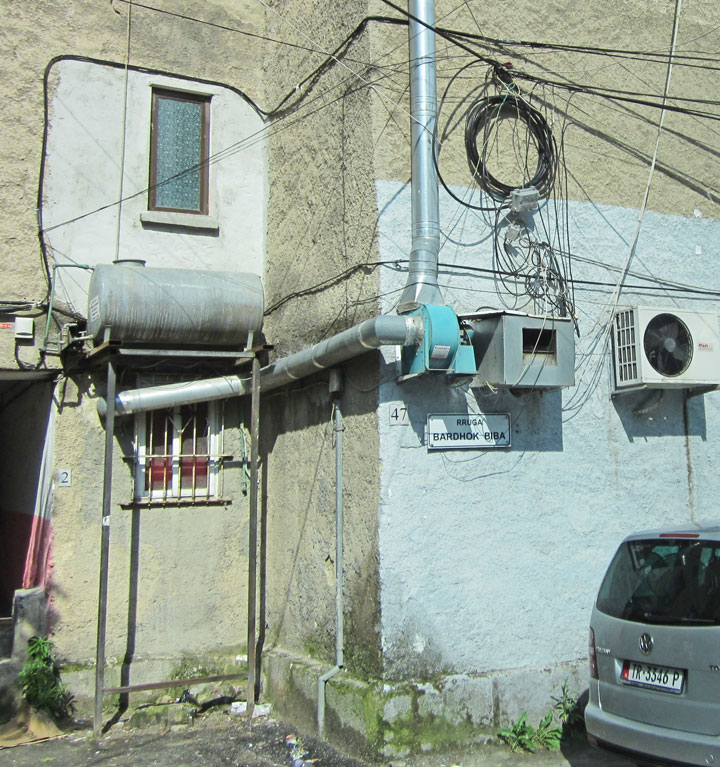
interesting wiring
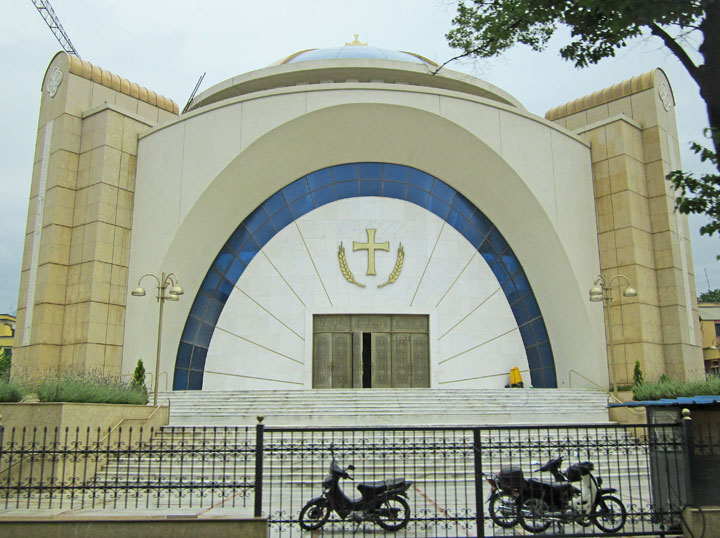


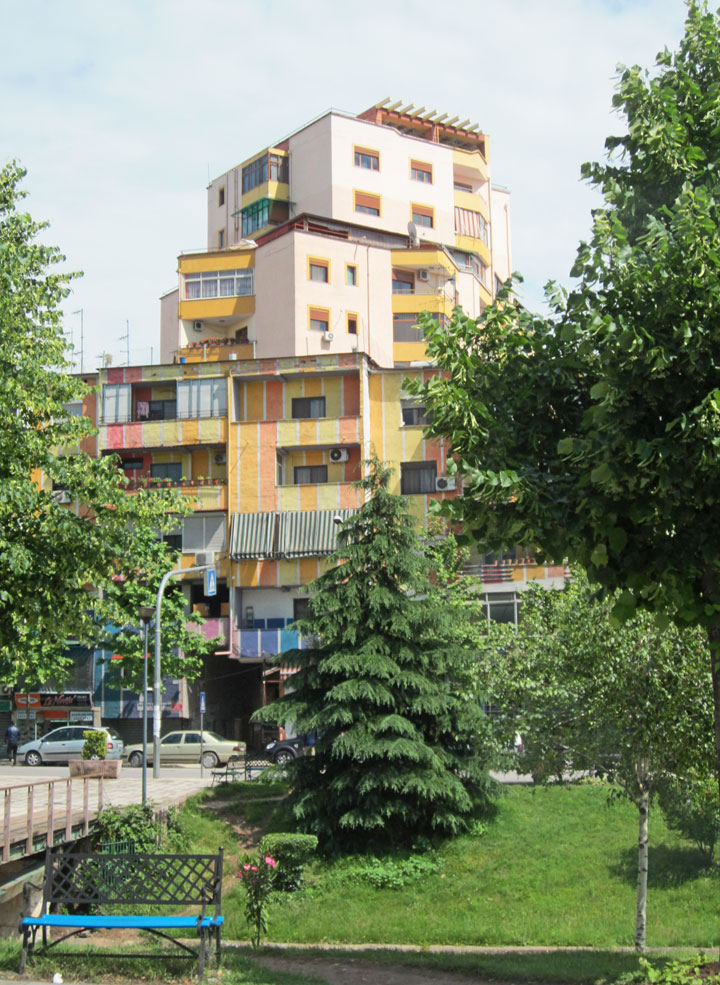
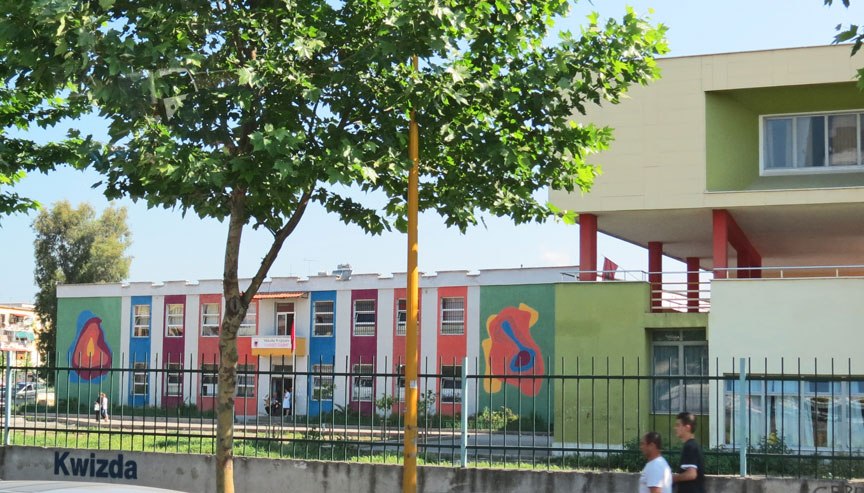
school
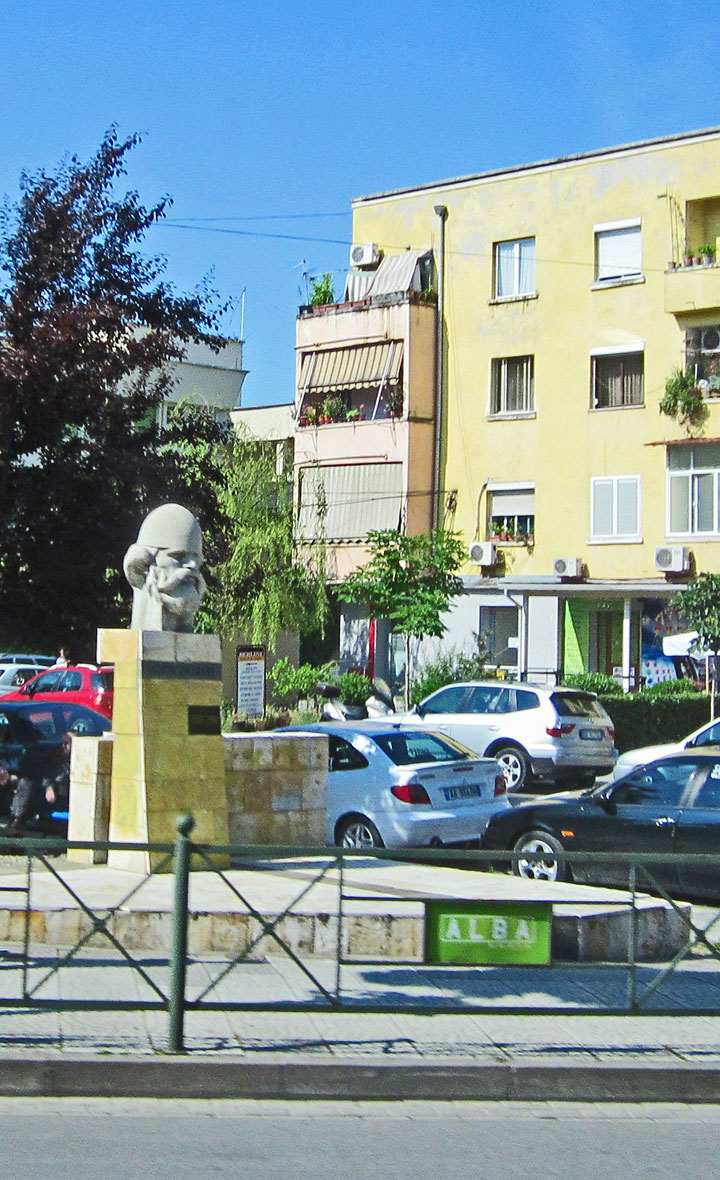
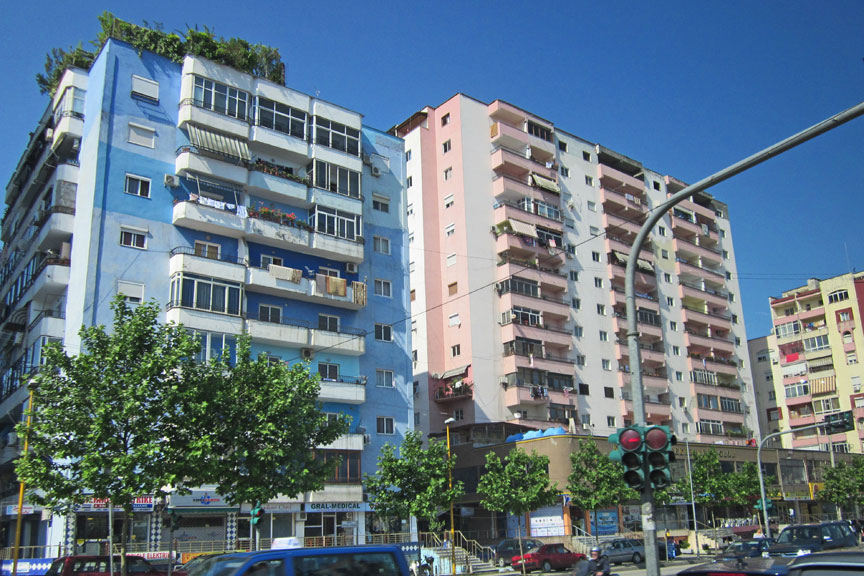
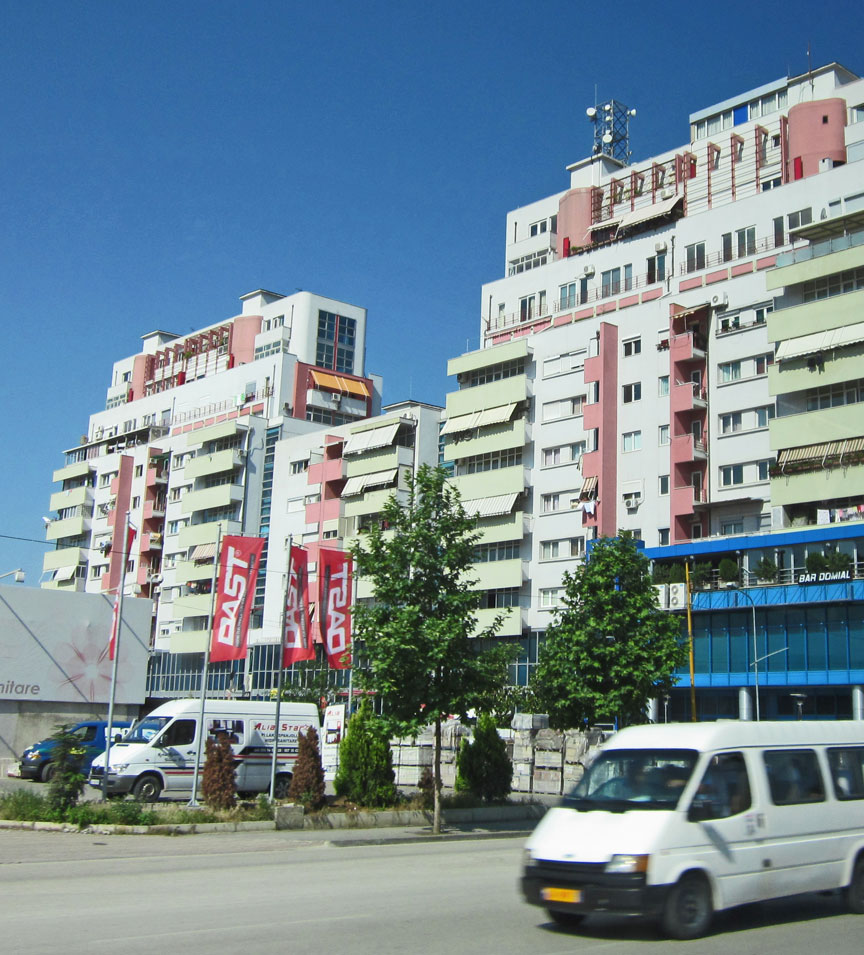


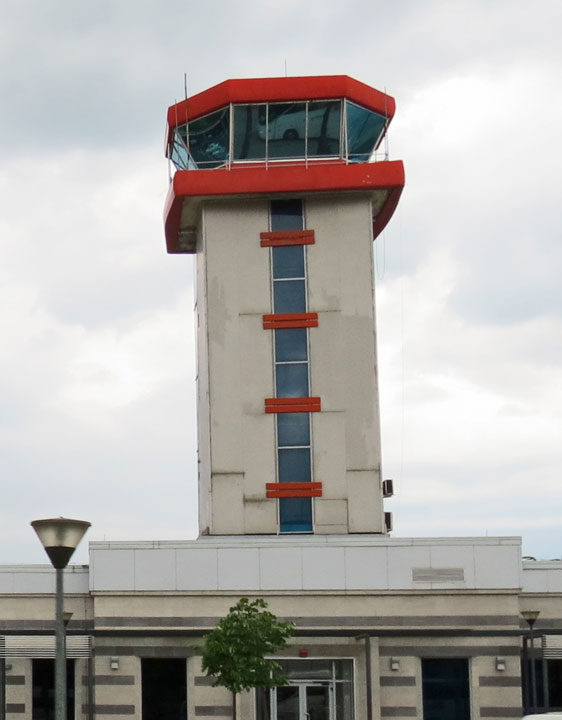
airport tower
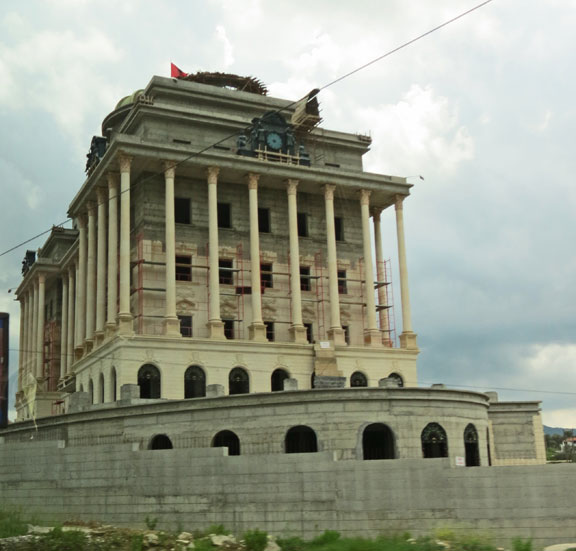
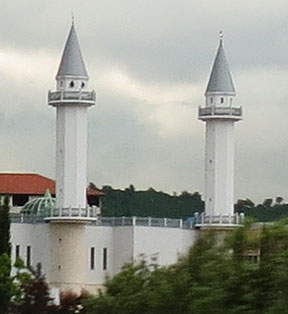
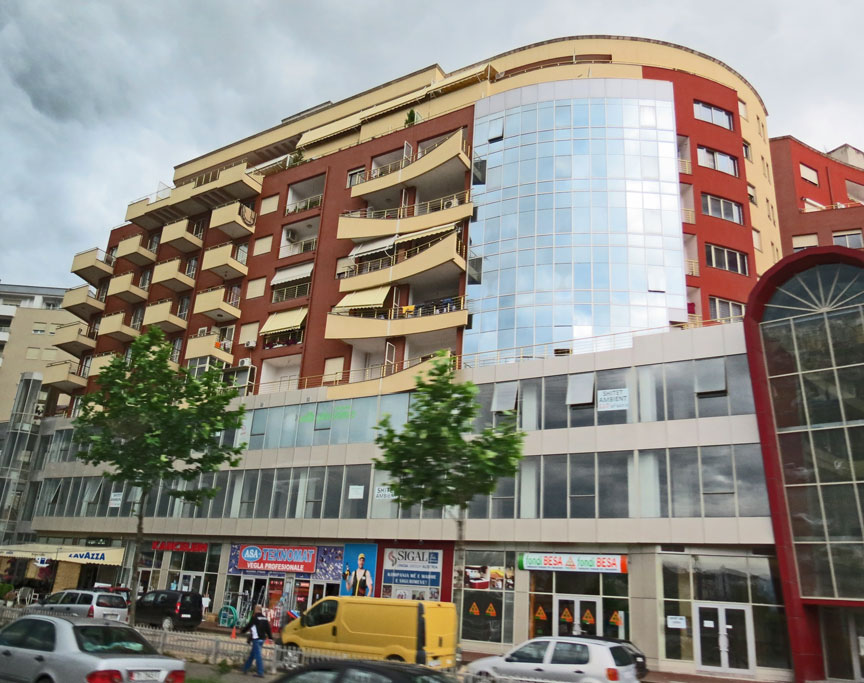

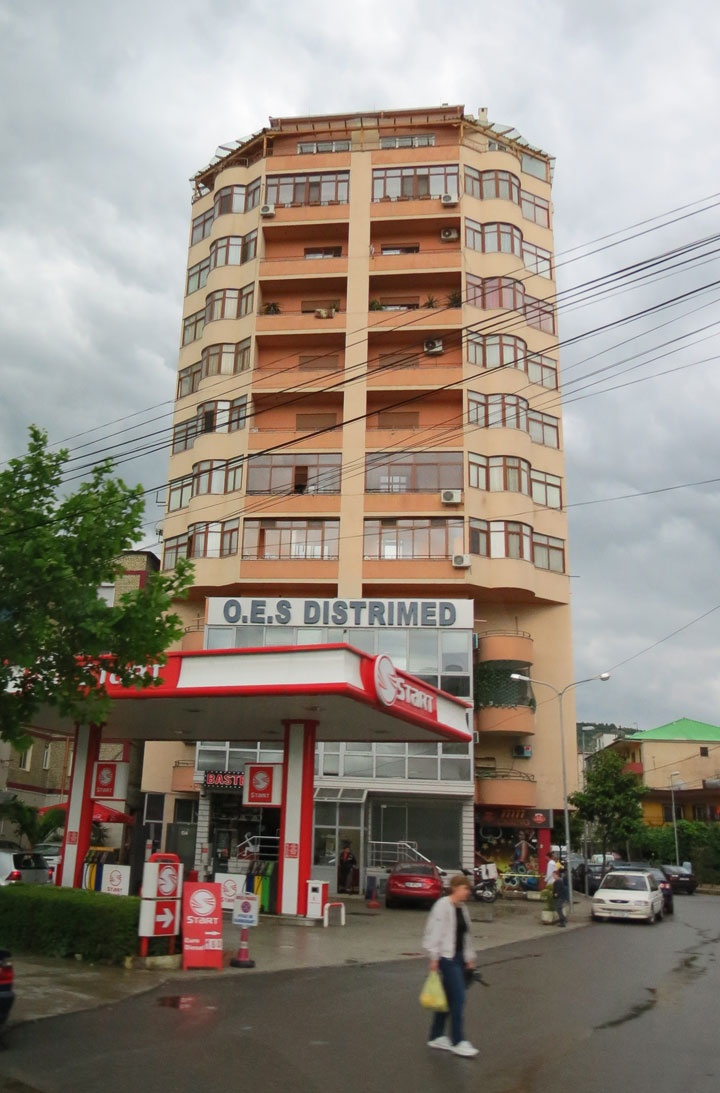
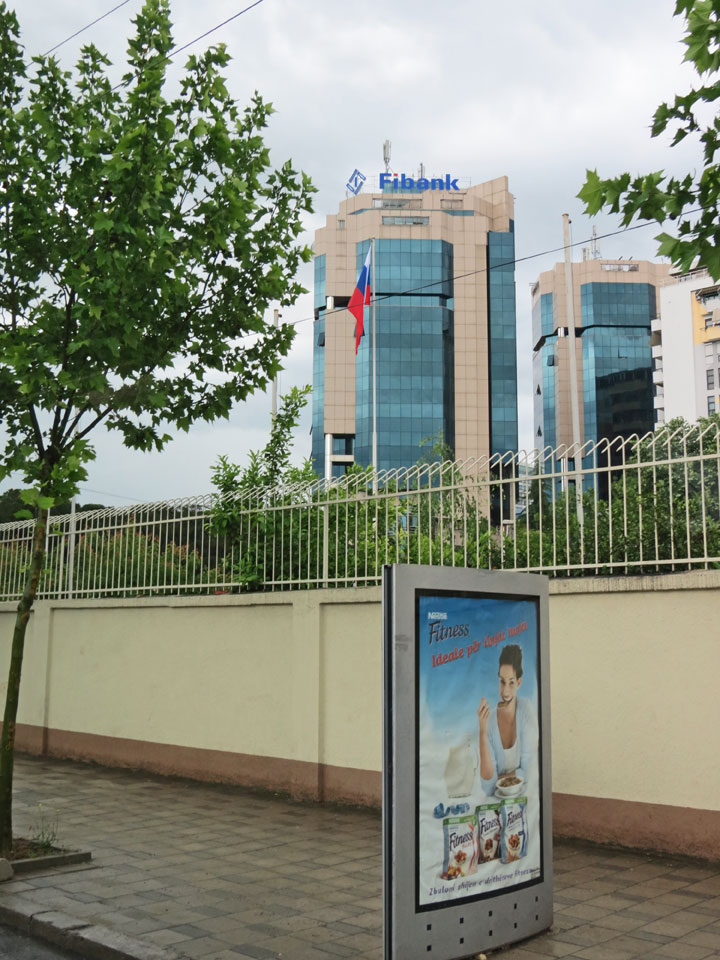
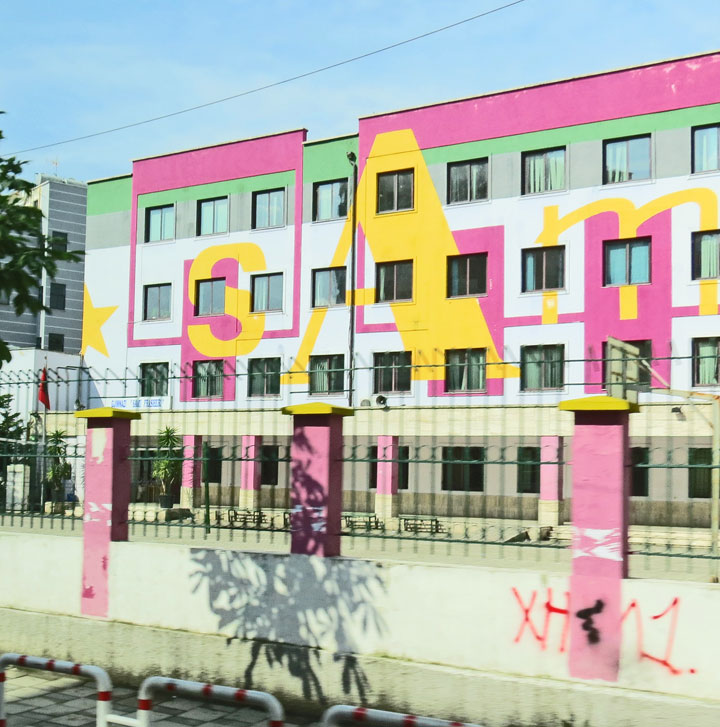
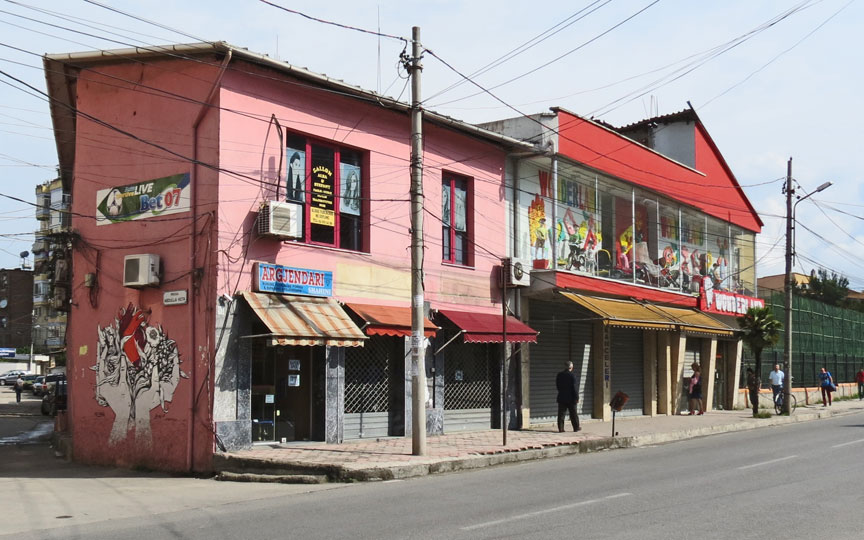

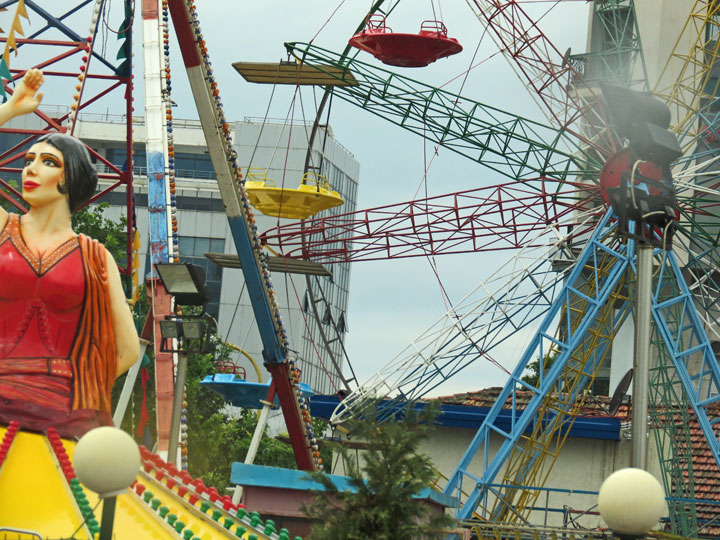
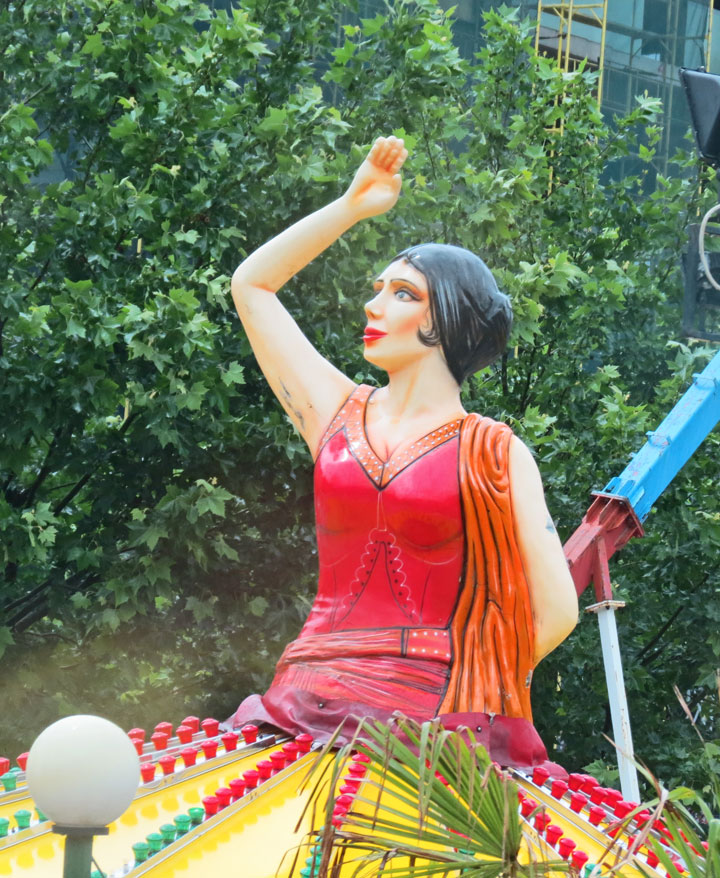
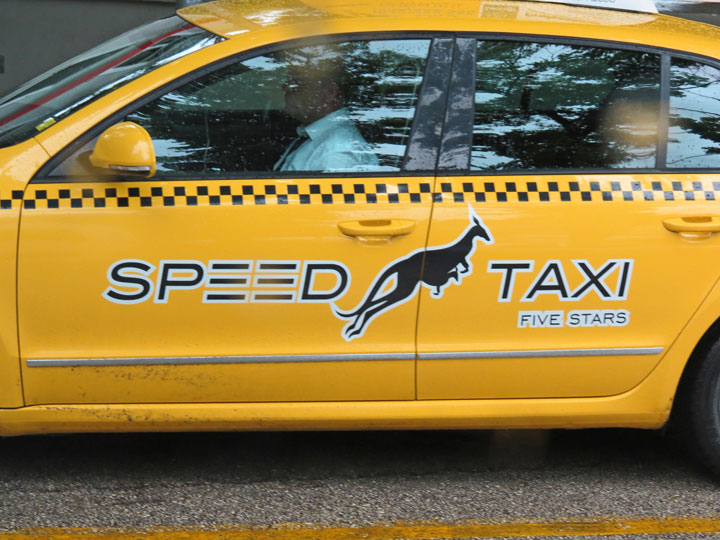
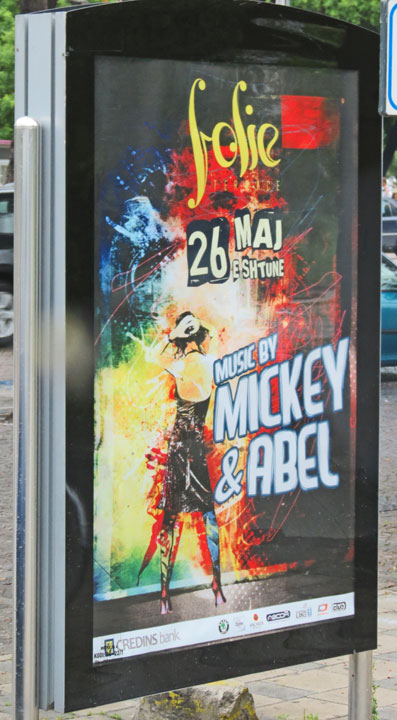
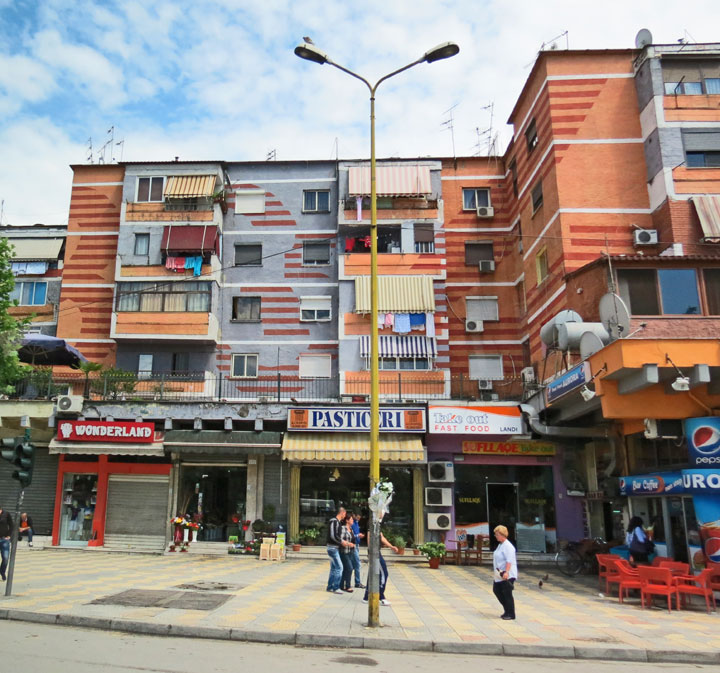
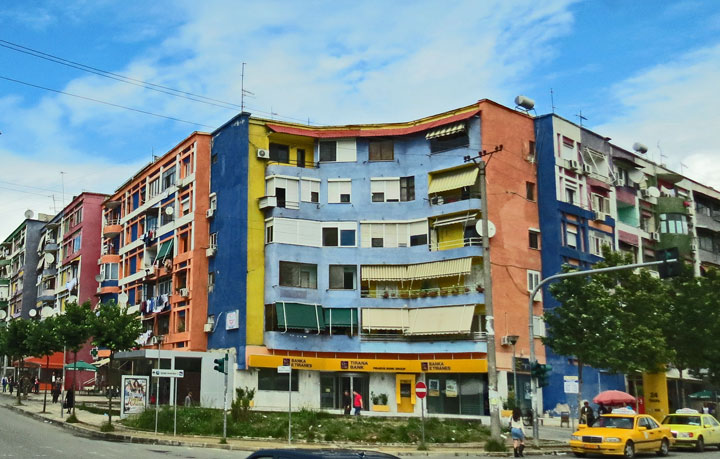
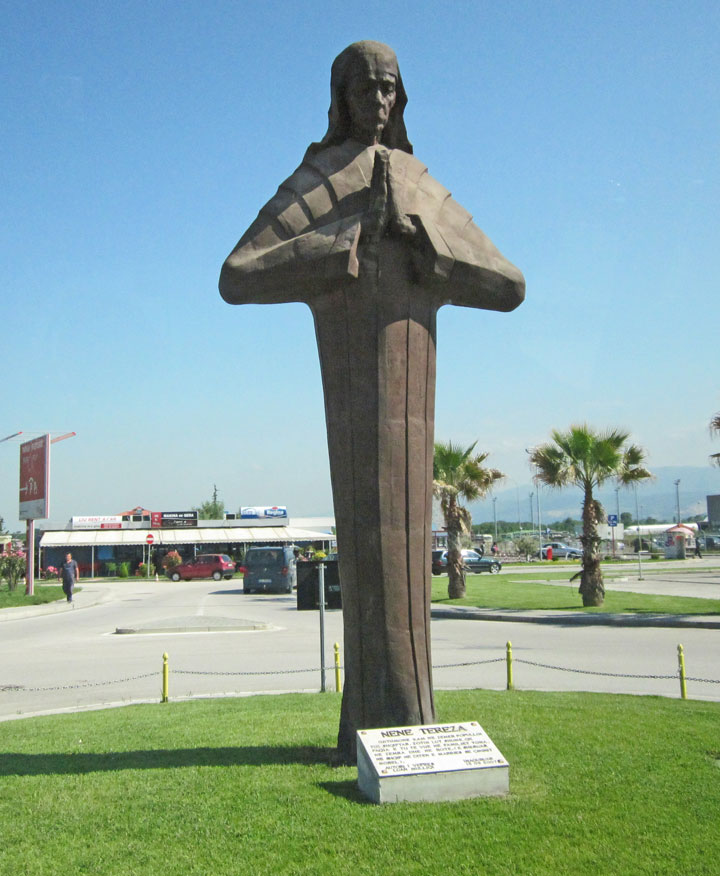
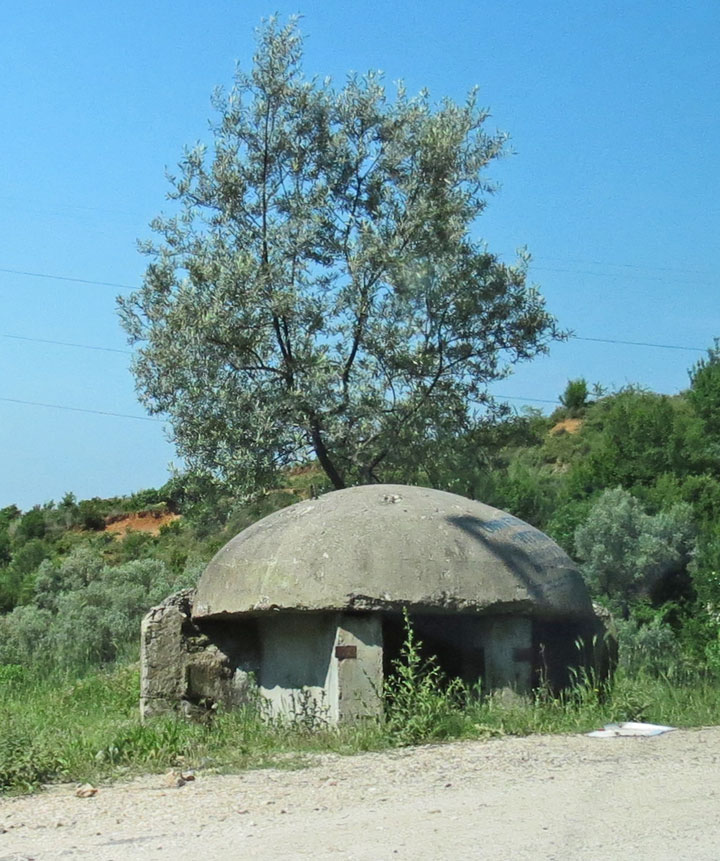
"pill box" to defend Albania from
invasion by the
US Navy Third Fleet in the Mediterranean